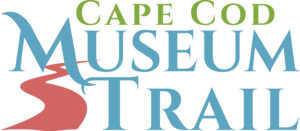CAPE COD MUSEUMS
TAYLOR BRAY FARM MUSEUM
Yarmouth Port, Massachusetts 02675
Native people inhabited at least part of the property. Around 1640, European colonization that had begun in Plymouth in 1620, had spread to this portion of Cape Cod.
Whether you are a Cape Cod native, a recent wash-ashore or vacationing on the Cape, a visit to Taylor-Bray Farm is well worthwhile. The Farm has been here since the days of the Plymouth Colony so needless to say, there is history here but that's not all. Take a look around; there's a lot to see and do.
Start at the late 18th century Taylor farmhouse. The house was built by Samuel Taylor some time after he returned from service in the Revolutionary War. The house has recently been renovated and furnished with period pieces and is now open to the public.
There are picnic tables near the farmhouse should you like to use them.
We have animals. It is a farm, after all. The friendliest animals have to be Rusty and Dusty, our goats. Scotty and Fiona, Scottish Highland cattle are out in the pasture. Despite their size, they are quite gentle but with those long horns, you don't want to get too close. Maybe some day, you'll get a ride in the donkey cart we're training Sam and Nestor to pull. We have a flock of chickens too. And of course, there are the sheep. Come visit all of them. Kids love them, especially in spring when the new lambs arrive.
After you have seen the animals, walk out the boardwalk into Black Flats Marsh. This is largely what Richard and Ruth Taylor saw when they first established this isolated farm in 1639. The Chapin Beach dunes are to the west or left and beyond them, Cape Cod Bay. The Town of Dennis, once part of Yarmouth, is on the far side of the marsh. In the spring or summer, you may see osprey nesting on a platform in the marsh about 100 yards to the north of the boardwalk.
Come around for a farm festival. The Sheep Festival is in June. Watch our sheep being sheared and Border Collies herd the sheep. In October, enjoy the Fall Festival for hayrides, cider and pumpkins. In December, come to the farm for your Christmas tree and other holiday goodies.
While this area has been a farm for almost four centuries, it has been inhabited far longer than that. Ongoing archaeological work reveals that the site has been seasonally inhabited for as much as 10,000 years. More fieldwork is planned to further our knowledge of the early farm, its residents and the native people who have inhabited the area for so long. We welcome volunteers to join in the work; visit the Archaeology page to learn how you can help.
As you can see, there is a lot to do at the Farm, so come visit. The farm is open seven days a week from dawn to dusk. There is no admission fee at the farm although donations for the care of the animals and the maintenance of the buildings and grounds are greatly appreciated.
